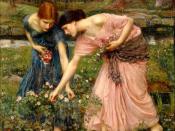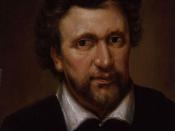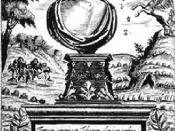The phrase "carpe diem" is a powerful Latin phrase, that when translated into English means "seize the day." Themes of "carpe diem" were predominant in seventeenth century
poetry, and this can be seen in the two poems, "To the Virgins, to Make Much of Time," by Robert Herrick and "To His Coy Mistress" by Andrew Marvell.
Robert Herrick's, "To the Virgins, to Make Much of Time" is a popular poem in British literature, that professes a common universal moral. The first two lines read, "Gather ye rosebuds while ye may, Old time is still a-flying." Herrick wrote these opening lines of imagery in order make it clear that he is concentrating on those in the prime of their life. The rosebud symbolizes the youthful person, because like a rosebud, a young
person has not yet experienced life to its fullest. The following lines are, "And this same flower that smiles today, Tomorrow will be dying."
Again, the youth is compared to the flower. However, now Herrick has begun to focus in on the idea of death. This is where the poem starts to reveal the theme. The next four lines speak of the swift rise and fall of the sun in its daily course. Herrick is used this image in order for his readers to really grasp the concept of just how quickly life passes by. The next few lines are extremely straightforward, "The age is best which is the first, When youth and blood are warmer:" The words here speak for themselves. Herrick is saying that our youth is the best part of our life when we are full of energy. The last four lines of the poem read "Then be not coy, but use your time, And while ye may, go marry;...


